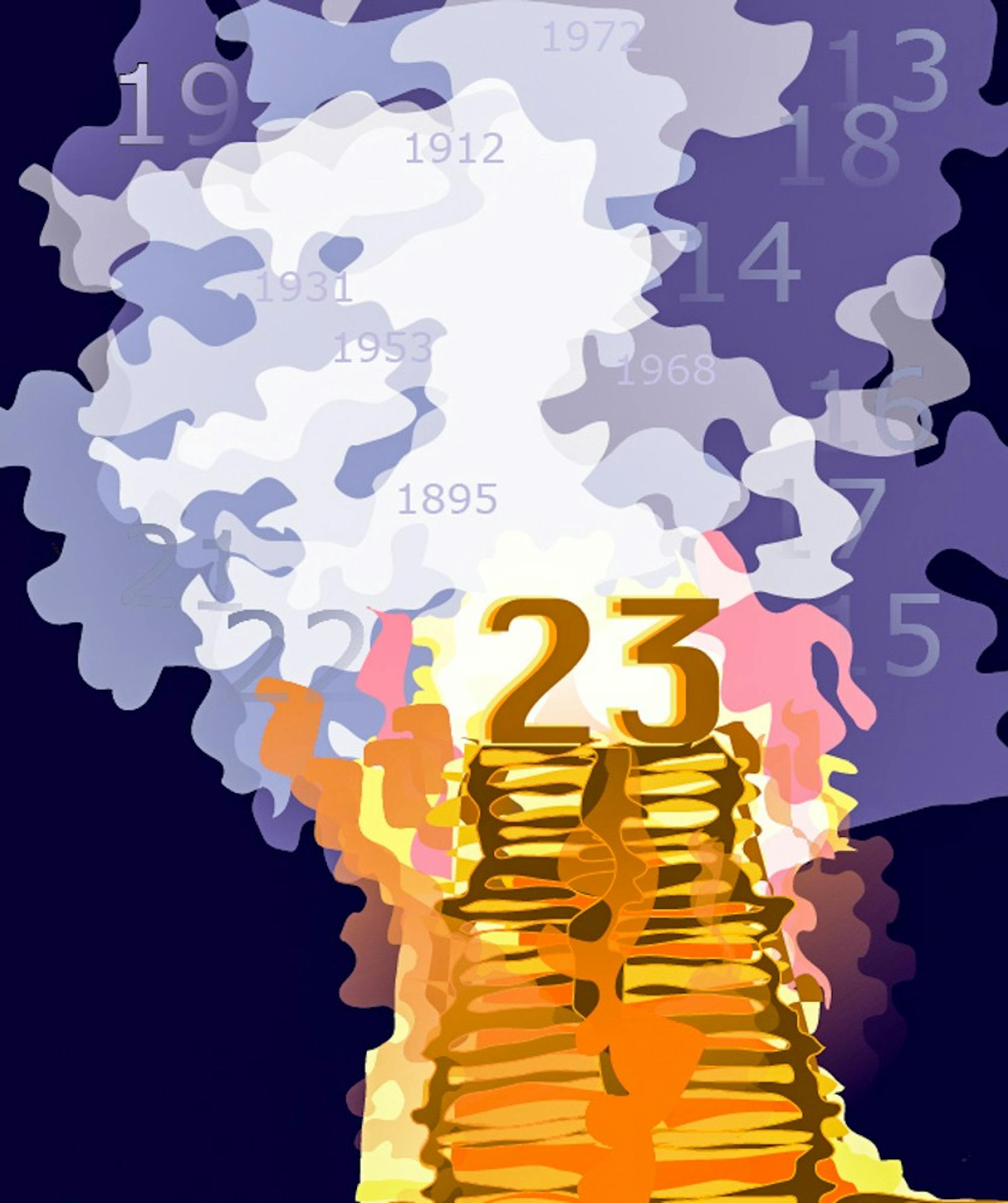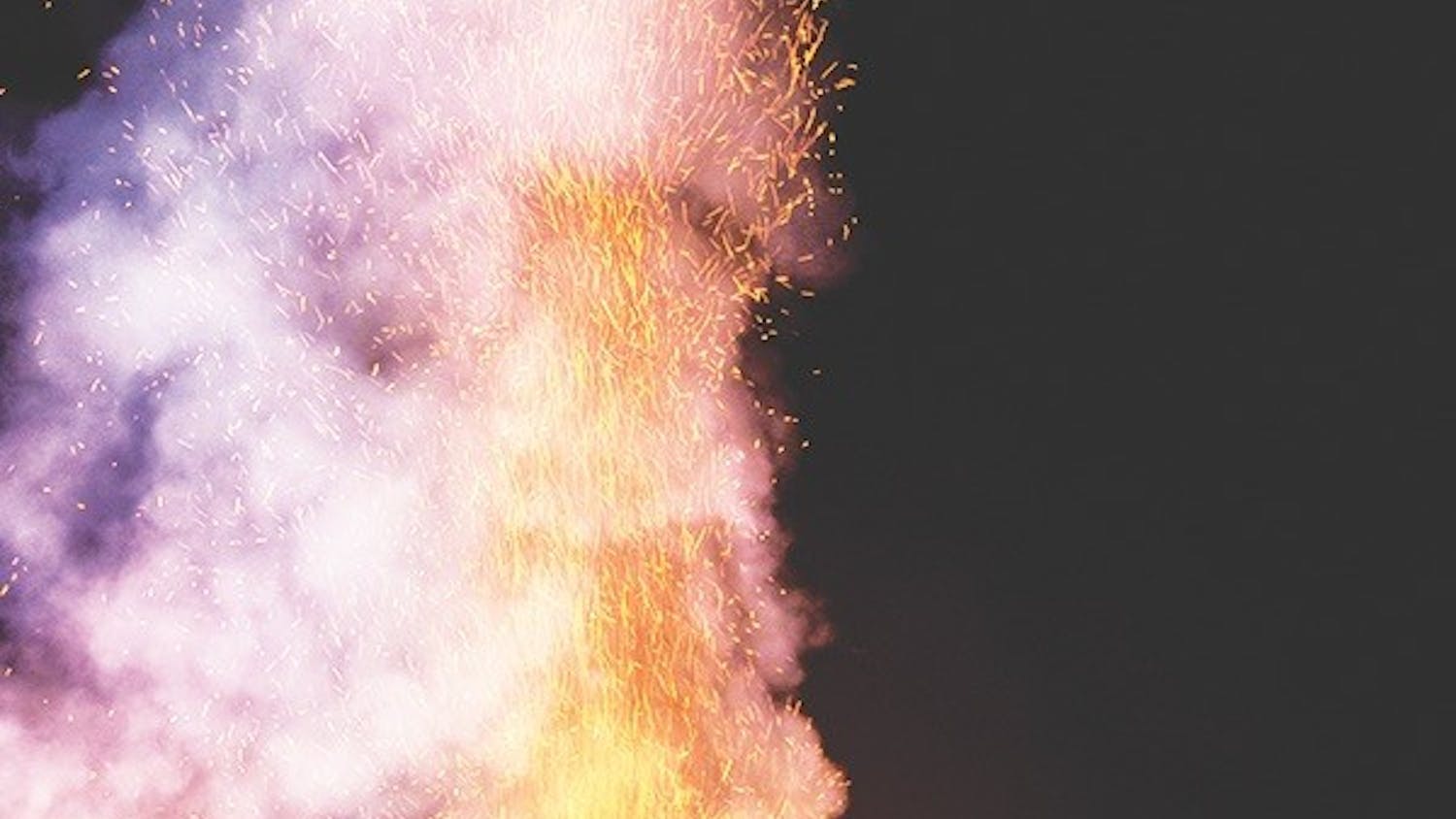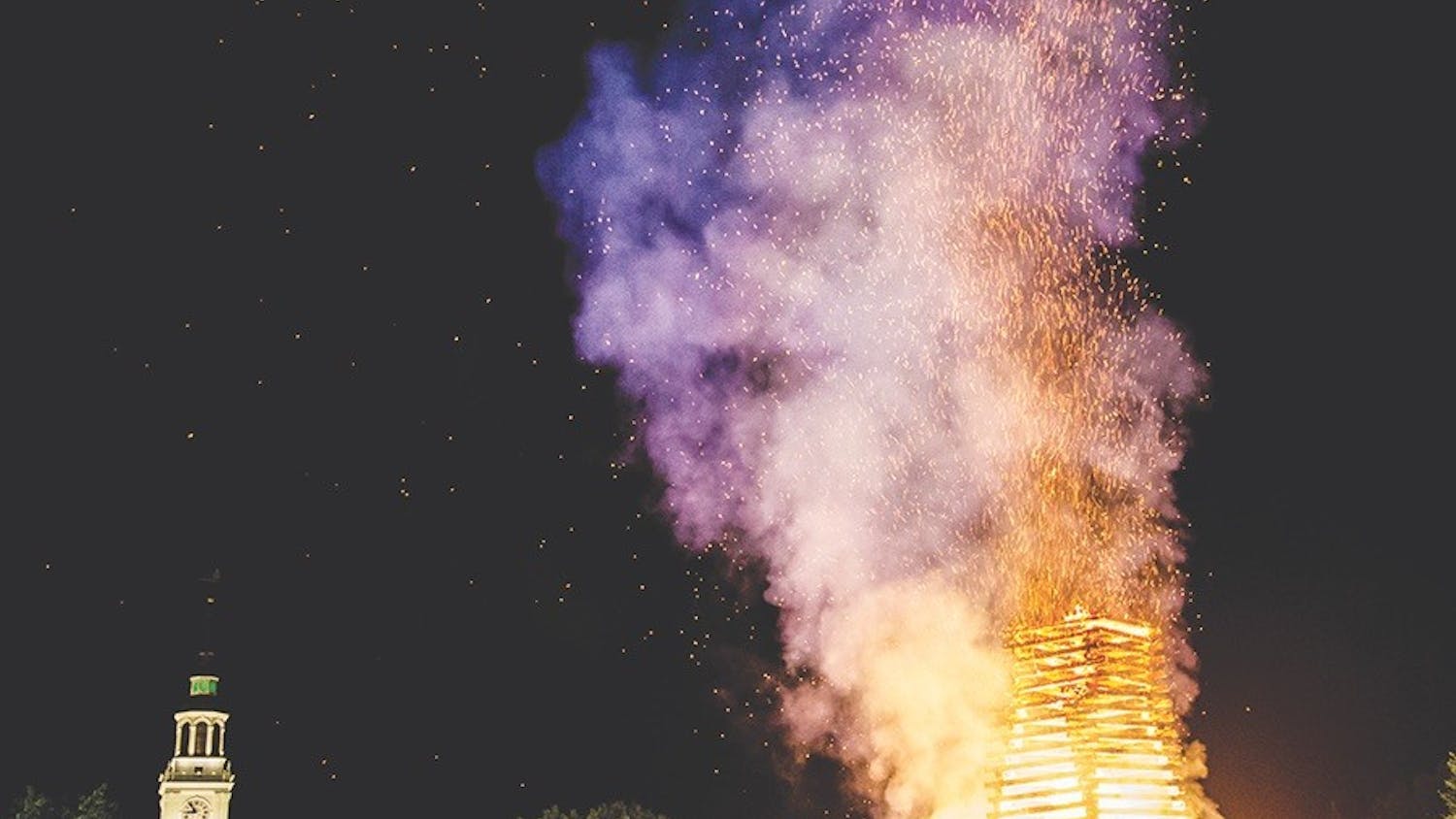This article is featured in the 2019 Homecoming special issue.
Given the ubiquity of Homecoming in contemporary American society, it can appear as though the tradition has always existed; even at Dartmouth, however, this celebration did not begin with the institution’s founding in 1769.
The ninth president of the College, William Jewett Tucker, helped launch the earliest remnants of what students now know as Homecoming Weekend. In an event called “Rhetoricals,” the entire student body met on a weekly basis in the Old Chapel of Dartmouth Hall to promote community.
Tucker called this exercise “a rare opportunity of indoctrinating undergraduates into the permanent duties and responsibilities of the College fellowship.”
In September 1895, when the College population outgrew the capacity of the Old Chapel, “Dartmouth Night” replaced “Rhetoricals.” The event, described by an 1896 issue of the Congressional Record and New Hampshire Journal as “an evening [devoted] to the traditions and glory of Dartmouth, and to stimulate pride in her achievements, and strengthen the purpose that the present and the future of the College shall be worthy of its past,” was intended as another way to gather and celebrate the history and significance of the College.
College archivist Peter Carini said that Tucker intended to use Dartmouth Night as a way to connect with alumni and bring them together, as well as a means of fundraising.
In 1904, Dartmouth Night programming included a procession, a historical address, prayers and hymns, musical performances and banquet, with copious cheering and singing, as well as praise for Dartmouth’s most successful alumni. The accompanying football game that is a central component of the modern tradition did not arise as part of “Dartmouth Night” until 1923 when construction on Memorial Field finished.
Another pillar of the Homecoming celebration in its modern iteration is the bonfire, which — separate from Homecoming itself — has its own tradition that is undergoing several changes. As previously reported by The Dartmouth, beginning in 1888, the bonfire was a means of celebrating baseball victories until 1895.
“Students would do [bonfires] sort of spontaneously, usually as a celebration after a football or baseball game or something,” Carini said. “The early ones look like they basically went around town and if it wasn’t tied down they took it, so things like wagon wheels and signs and all kinds of things just piled up in the middle of the Green and then they would burn those.”
On Sept. 17, 1895, Tucker’s Dartmouth Night had its inaugural kickoff, containing an official bonfire as a part of the event. However, much regarding the bonfire has changed since then.
In the early 1900s, a visit from William Heneage Legge, the Sixth Earl of Dartmouth, caused college students to parade around the fire in an effort to impress the Earl, which contributed to the beginning of the tradition of running around the fire. In 1923, the event began to become associated with the football team and their Homecoming weekend game.
The bonfire has also had its fair share of controversy. In 1950, rogue students lit the fire 24 hours early, causing a group of other undergraduates to rally and successfully reconstruct the framework overnight. This student-led effort prompted the College to allow students to help build the structure next year, starting a tradition that continues today with the freshman class bonfire chairs.
In subsequent years, students would build an oversized fire that became too large and prompted College regulation on the construction of the fire. Additionally, livestreams of the event, “the freshmen sweep,” and improved building technology and strategy have all been implemented in recent years. Last year, a change — in response to safety concerns from the town of Hanover — prevented students from running around or attempting to touch the fire.
Kaulana Kanno ’23 said that irregardless of the changes, she’s excited for the football game and the accompanying bonfire at Homecoming this year.
“They still do the same things on [First-Year Trips] as 20, 30, 50 years ago, and that’s pretty awesome,” Kanno said. “At the Dartmouth Hawaii Club party, they talked about coming back to Homecoming even after graduating so long ago, and I think that’s really cool, that people still want to be here.”
James Kallman ’86 returned to campus for Homecoming for the first time last year because of his daughter, Emma Kallman ’22, and will be back on campus this fall as well.
Kallman said that he knows many alumni want Dartmouth traditions to never change but acknowledges that this sentiment is not realistic. He added that many of the changes revolved around ancillary festivities the College promotes for attendees, occurring before and after the lighting of the bonfire. He added that the construction of the bonfire, now being overseen by the College and engineered by the Thayer School of Engineering, is much more controlled than when he celebrated the tradition as an undergraduate.
“There is no way that the students building it in my day were following any sort of safety protocol,” he said. “Looking back from another viewpoint, that was pretty dangerous.”
However, he acknowledged other alumni think differently.
“For some alumni, having a barrier at the bonfire is probably disappointing,” Kallman said. “It interferes with the purity of it, but I certainly get the safety concerns.”
For Kallman, returning to Dartmouth as both a parent and alum is a revitalizing time to reconnect with the College.
“It is a very interesting experience to rediscover as a parent,” he said. “There’s been a lot of change, but it is generally positive. It is interesting to see what has stayed the same and what has changed.”




